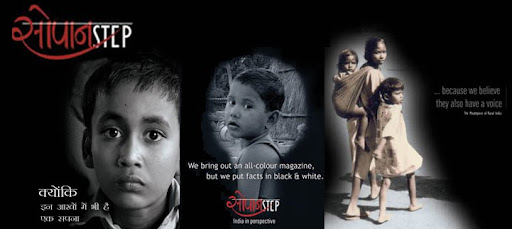K R Suhaman/ Dehradun
The India Foundation for Rural Development Studies (Infords), which brings out Sopan Step monthly magazine, had inter-active session with experts to highlight the possibilities that existed to take advantage of the unique ecosystem particularly in hilly state of Uttarakhand to make farming profitable
The India Foundation for Rural Development Studies (Infords), which brings out Sopan Step monthly magazine, had inter-active session with experts to highlight the possibilities that existed to take advantage of the unique ecosystem particularly in hilly state of Uttarakhand to make farming profitable
Sopan Step a non-government
organisation working to improve the lot of rural population organised a
national symposium in Dehradun to create awareness among farmers in the
surrounding areas the various options available to make farming profitable.
Farming is a risky venture in
India
The India Foundation for
Rural Development Studies (Infords), which brings out Sopan Step monthly
magazine, had inter-active session with experts to highlight the possibilities
that existed to take advantage of the unique ecosystem particularly in hilly
state of Uttarakhand to make farming profitable. The symposium, the first of
its kind to have direct inter-action with farmers, was inaugurated by the state
Chief Minister Harish Rawat.
Experts who participated in
the symposium highlighted the options available for farmers to earn more money
taking advantage of the climate and terrain at the foothills of Himalayas . Presently farmers go in for traditional
cultivation of rice and sugarcane, which do not make farming that profitable
because of the risks involved in the region. To mitigate the risks, the best
solution, the experts said, were to go for aromatic and medicinal plants
cultivation in between tradition a crop cultivation by adopting inter-cropping.
This will ensure additional income as some of thees plant are weather resistant
and do not interfere with main crop. Also these plants fetch more income as
they are in great demand and required special ecosystem, which is prevalent in
the region. There is also scope using a portion of their farm land to cultivate
fruits and vegetables, some of them exotic, as the area is ideally suited for
horticulture. As these being cash crops earnings go up substantially making
farming a losing venture now into a a profitable one. Dairy is another option
that could be looked at along with farming. In this part including western
Uttar Pradesh, selling milk by farmers is a taboo. This however needed to be
overcome by forming cooperatives as in Gujarat, Southern states and elsewhere
in the country to augment their income as pursuing only traditional farming do
not provide income stability.
These are some small steps
that could be taken but farmers by and large particularly in this part of the
country are averse to deviating from tradition and this awareness campaign served as an eye opener and the
alternatives suggested brought about some changes in the thinking of farmers to
look at options available to make their farming sustainable and profitable. One
issue that cropped up was the Nilghai menace in the region, which destroy
standing crops resulting in all their efforts going waste in one go. To
overcome this problem chief minister promised to step up fencing of farm land
and he announced Rs 100 crore in the state budget this year. This may not be
adequate but a beginning has been made. The day long symposium too made a
beginning to make some of the farmers rethink their strategy to make it 'Munafe
ke kheti from the present Ghate ke Soudha.


